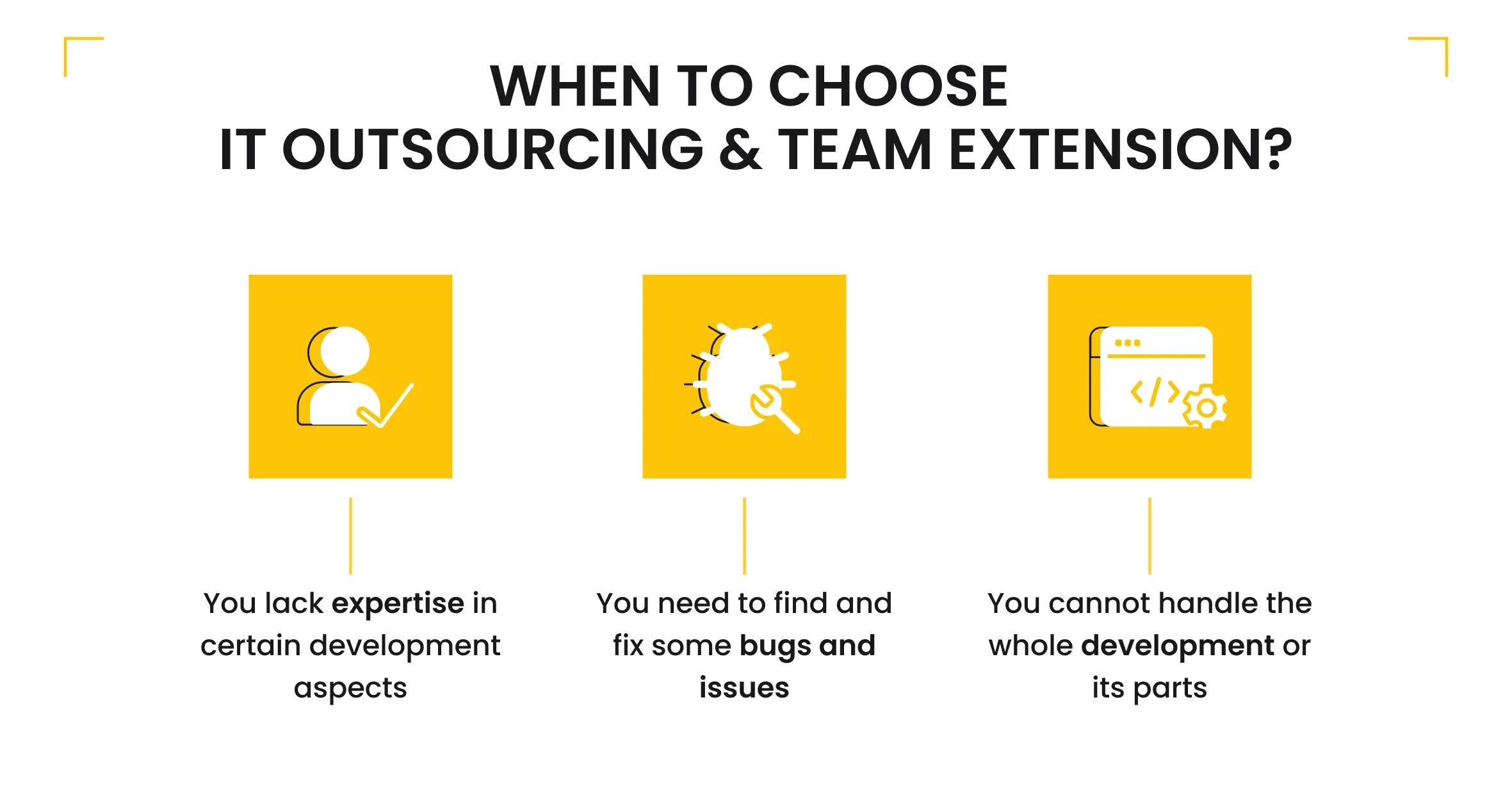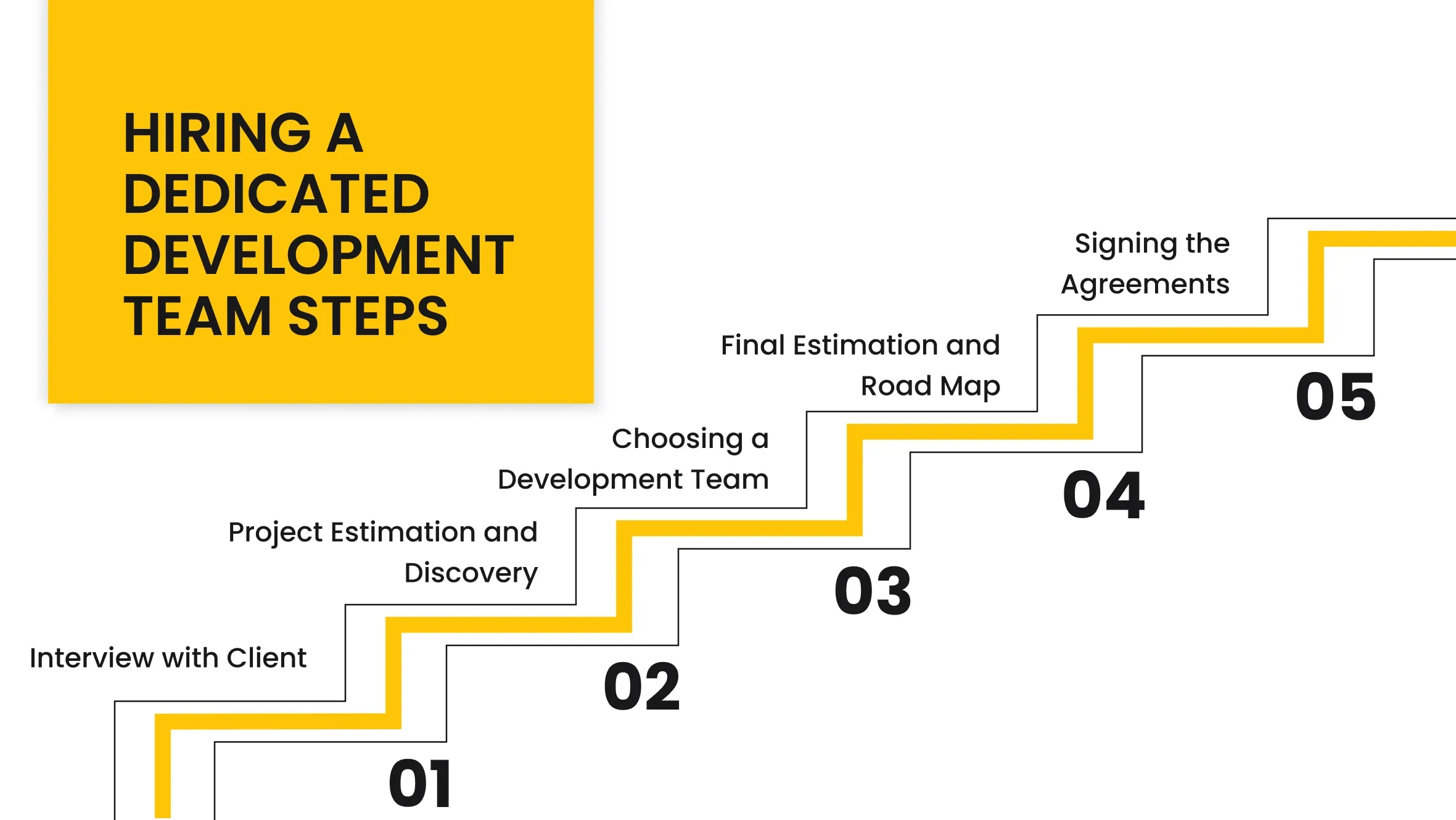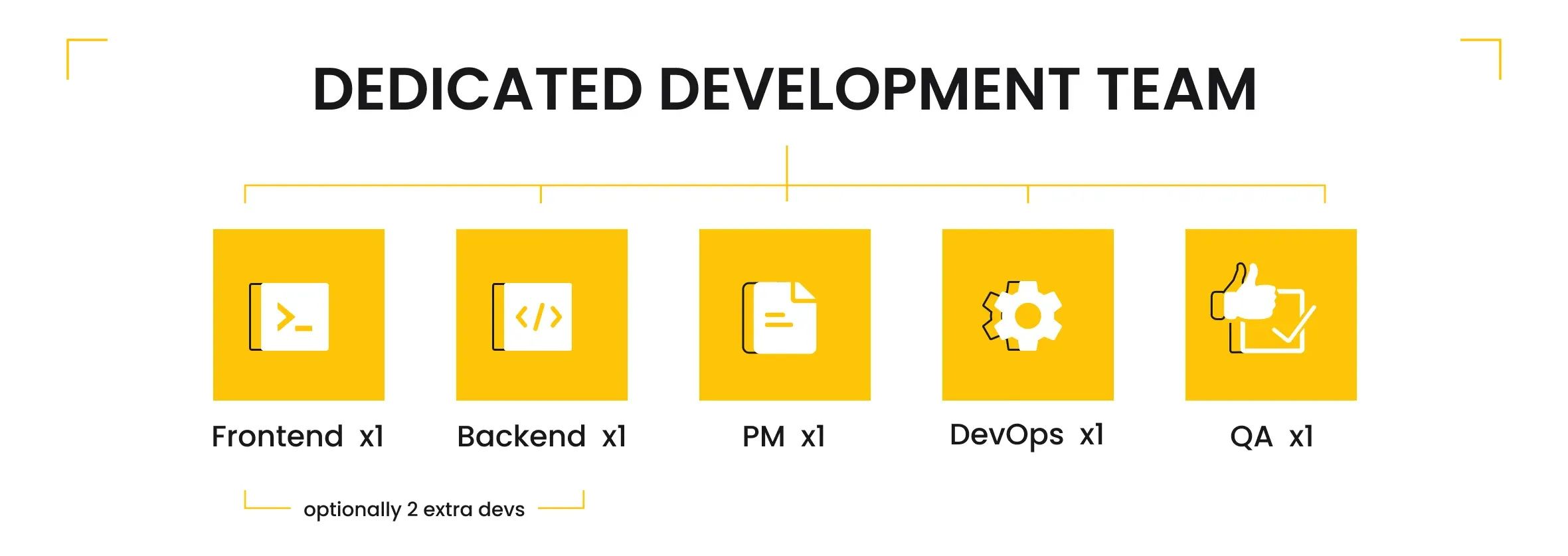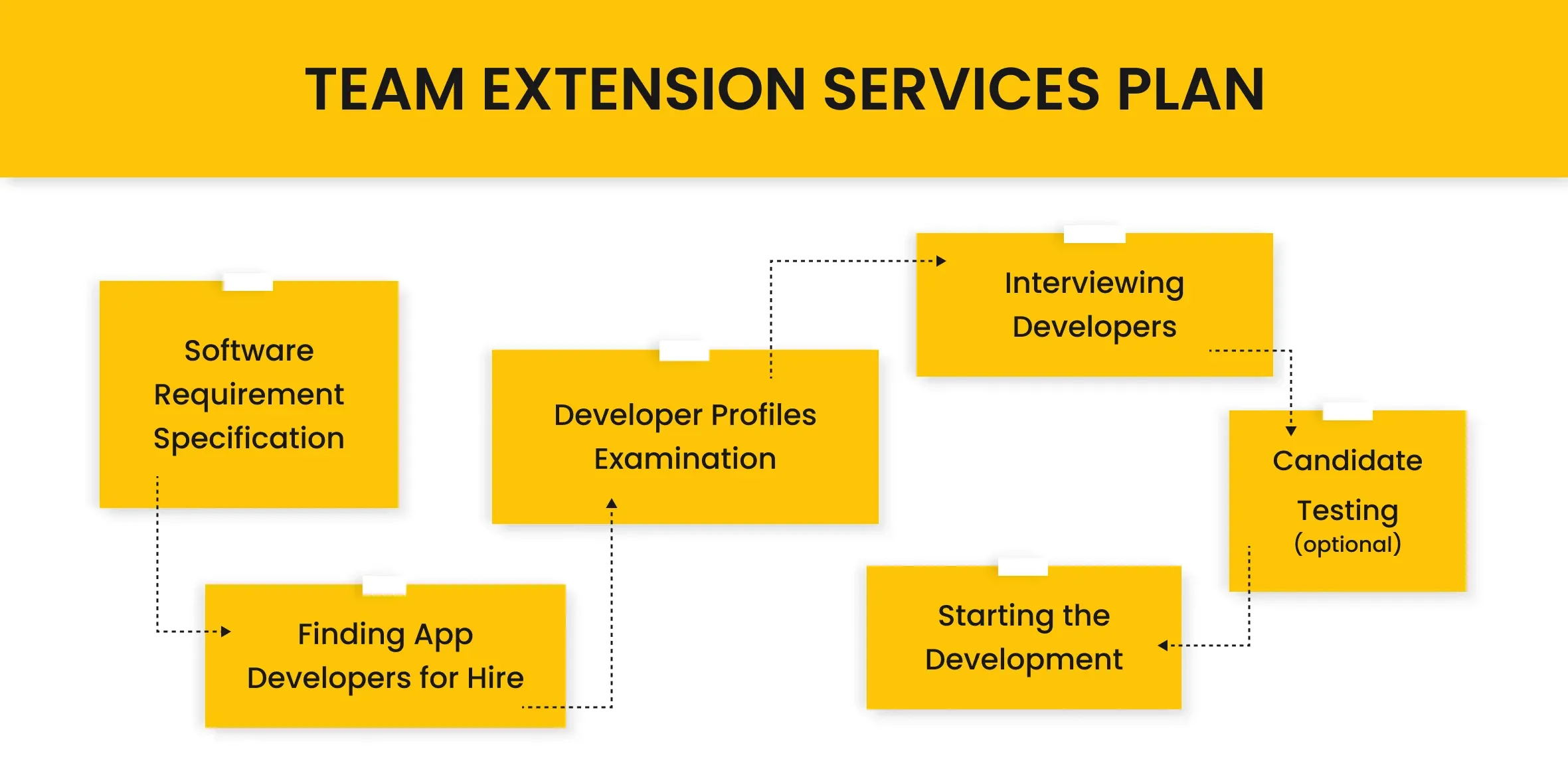Sneak Peek at Software Development Process That Works
September 16, 2022 • 958 Views • 24 min read
Bohdan Vasylkiv
CEO & Co-Founder
Software product development is a complex process, that requires a lot of time, effort, and technical skills. In the IT sphere, there are three most common types of project management for software development:
- you are hiring a dedicated development team for your software project
- you are looking for team extension services for an ongoing project
- You are developing your app by yourself, with the use of an in-house team.
Mostly, the third type is a standalone independent process, which requires different software development project plans and approaches. Therefore we will avoid it. Instead, let’s look closely at the first and second options.
Hiring a remote dedicated software development team is quite an obvious decision, regularly used by various companies to turn the concepts into reality. The project idea itself may differ and relate to any industry: it can be a specified software for internal usage inside the corporation, a full-fledged mobile application, a Progressive Web Application(PWA), a simple website, an Operational System(OS), etc. The variety of options is enormous.
Instead, it is easier to specify the clients, who are the most common customers of dedicated team service. For instance, usually, they are not working in the IT sector and don’t have a software team, therefore they have to use the services of white-label app development companies like Incora.
At the same time, companies, that look for app developers for hire in terms of team extension services, are related to the software development industry.
Mostly, IT outsourcing and team extension services are chosen when the in-house team cannot perform some task. For instance, it needs to find and fix some bugs, might lack expertise in specific software development process steps, or simply cannot handle the entire software project or its certain aspects on its own. Therefore, they are looking for app developers for hire, experienced in a particular niche or technology.
“So what is the difference between these two?” - you may ask. The short answer is: primarily it is the logic of the software development process model.

Despite that both developer collaboration approaches are common in the IT outsourcing industry, they are used in very different cases. It is hard to specify exact requirements and working strategies, because they vary, depending on the particular context.
Yet, mostly, remote dedicated software development teams are used to develop a project from scratch. Therefore, a remote development team provides its services for developing a project from the very beginning to the end.
At the same time, team extension services are used as a reinforcement to an established team and software project. As a result, new members don't take part in the project discovery phase, its planning, and estimation. Instead, they have to learn the core aspects and specifics of the development process.
Sometimes team extension can be even more difficult than developing from scratch. In such cases, outstaff offshore developers highly depend on knowledge sharing to get acquainted with previously written code. Dedicated teams are involved in the software development process from the beginning, so they don’t need to learn prewritten code or other project specifics.
So, what are the steps of the development process for a software project? How to hire a dedicated development team?
Briefly About Software Development Process Models
The cooperation strategies can also vary for both cases. It is essential to ensure great communication to manage remote software developers efficiently. Therefore, we propose to consider our cooperation strategies as an example.
Among the services, commonly provided by IT vendors, we can name both dedicated development teams and team extensions. Apart from that, at Incora we propose manual QA software testing and DevOps software development as a service.
If you wonder what the software development process steps are - here is a short tutorial for each type of cooperation:
Hiring a Dedicated Development Team

Interview with the Client
First things first, we contact our client. The meeting itself can be both virtual and physical.
At this meeting, we discuss the concept of the project and shape the software requirements specification, core features, UI design, and other working aspects. Usually, clients show their drafts of the main aspects to consider, including visualization.
Yet, in case they don’t have one, our customers are free to show some existing samples of the desired product so that we can understand the overall scale of work.
Estimation and Discovery Phase of the Project
Then, our software development planning team and CTO make the first high-level estimation of the final product. It is based on the scale of work, its complexity, tech stack, etc.
However, it is a rough estimate, which may not include some services or features. This estimation is performed as fast as possible, to acquaint the client with the approximate price and time, required for the development.
After the estimation is done, we offer our vision of the project with all related factors and elements. During the presentation, we can make some changes depending on the will of the customer.
Also, at this stage, we can ask questions to clarify controversial points. We aim to meet all the requirements and develop a high-quality product in terms, that will satisfy both sides of the agreement. Therefore, if everything is all right, we can proceed to the next software development steps.
Choosing a Team for the Development Process

After we have all the needed information and approved concepts, we select app developers for hire for the project.
We take into account all the previously agreed aspects to pick the best team for this particular software product. Usually, our dedicated teams consist of 5 people by role:
- Frontend and backend developers,
- Project manager,
- DevOps specialist,
- Quality Assurance expert.
Yet, if the project is more complex, then we can assign 2 additional developers for the front- and back accordingly.
Then, after the team was formed, we set up a meeting to introduce them to the client. In the case of IT outsourcing, the client is working directly with our company and reputation. Thus, they can’t rearrange team members or influence the team in any other way except by discussing it with the company.
Final Development Estimation and Road Map
In the final software development planning stage, we make a deep project estimation, that includes all features, aspects, functionality, and specifics like software architecture, or other software technologies.
This estimate can take more time than the previous one, however, it is the last software development planning step. This calculation helps to set the final price and figure out the scale of work, as well as the time required to embody the project. In other words, it aims to balance the Iron Triangle and avoid uncertainty or risks.
We propose our clients choose one of two different payment strategies and agreements: fixed price or time and materials.
Fixed price is a set contract when the client pays for the agreed tech stack and services, so in case there will appear some changes or the client would like to add something new, the development process stops until the new contract is signed.
Time and materials agreement, which is more flexible and allows making changes during the software development process. The client pays for the time, spent on the project, the qualification of the specialists, and the complexity of technologies, that were used.
After a deep estimation and signing agreements, our offshore software development team can start their work.
Acceptance Criteria
Afterward, when everything is set and the team is ready to go, both sides have to sign some final agreements and papers. During this software development planning step, we usually discuss additional terms, requirements, spending, etc.
Team Extension Services

Software Requirement Specification
The team extension development model starts with contacting the client. At this stage, we expect to get a software requirement specification. What is SRS?
To make it simple, software requirement specification is a detailed list of non-functional and functional project requirements. It includes both soft and hard skills, the experience of the developer, its status(junior/middle/senior), as well as a description of the project, used tech stack, etc.
It is designed to clarify everything, related to the software development process. This helps to better understand the terms of cooperation and the scale of work.
Finding App Developers for Hire
After receiving software requirement specifications, we search for the ideal candidates, that will meet them.
There are various factors we have to consider, like whether the needed candidate is available at the moment or has enough experience in the industry. Including the fact that such requests are unique and differ from each other, we have to choose a unique solution for each case.
There is no one-for-each approach, that will be utilitarian enough for all software development project plans. Yet, the most important thing is that this service must be done as soon as possible, in order not to make the client wait.
Examination of App Developers Profiles
When we found the required app developer for hire - we sent all related information like CV, their previous projects, etc.
In other words, all important information for the client to make a final decision. Usually, we are ready to propose alternative candidates, so our partners have a wider choice. Therefore, at this stage clients consider the provided information and choose the contenders they are interested in.
Interview with the Developer
The next software development basics step is to perform an interview between the client and the candidate. Team extension implies subordination to the client or their representatives, the interview may vary, according to their will. So, clients have more instruments and a flexible interviewing process.
If the candidate passes the interview and the client is satisfied with the results of the conversation - they can start developer collaboration, or the client can request a test task.
Candidate Developer Testing
This software development planning stage is also flexible enough to correspond with the client's requests.
For instance, it can be a small task from the specific field of the IT sphere or a regular test. Alternatively, some clients request a screen recording of the working process to see how developers deal with software development basics. Or, they can ask the developer to code during the conversation with the client, etc.
Starting Development Process
When candidates pass all previous stages, they can start working on the project. Usually, this process starts with getting acquainted with the project, its front- and backend, code samples, etc. These are software development basics when it comes to joining an ongoing project. Developers should learn what they are dealing with, and what is the current status of different aspects to perform a high-quality job.
For instance, before starting coding, new developers have to make sure that they understand the tech stack, used in this case, figure out the specifics of already written code, etc. This takes some time, however, it is an essential step, that guarantees the overall logic of the code structure and that everything will work as was supposed to.
Software Development Process

After dealing with software development planning, you can finally start the development process itself.
There is no need to describe in detail how exactly developers are doing their job. The software development process is the most flexible part of any development lifecycle. It directly depends on the concept, as well as planned features or services.
In other words, the software development directly depends on the context, and there are no utilitarian development approaches, suitable for all cases. So, even if you have the same startup idea and choose the same tech stack for two different projects - the final code will vary from each other.
Form of the Teamwork
As was stated previously, we propose two cooperation approaches: a dedicated development team and team extension services. Software development project plans and working routines differ in each approach.
For instance, a dedicated team can both develop projects from scratch or improve an existing product. Both cases include standard software development basics like coding, testing, management, and maintenance. The dedicated team option is equal to any other common development and mostly has the same requirements, resources, etc.
Team extension requires an additional software development step. This approach implies the integration of a third-party developer into an ongoing project. New team members need some time to get acquainted with the project itself, its progress, specifics of previously written code, means of communication with other team members, and their responsibilities.
The time, required for the adaptation may vary, depending on numerous factors, starting with the personality and experience of the new member, and ending with the scale of work and tech stack used.
DevOps Development Process
Here at Incora we also provide DevOps software services. This software development process model has a lot in common with team extension.
The main difference is that DevOps cooperates with clients for longer and also provides complex measures and solutions like building CI/CD pipelines on demand.
In other cases, like the development from scratch, we always propose our DevOps services in pair with the dedicated software team as an option, to achieve the maximum quality possible. Therefore, if you agree to our proposal, the DevOps team will work simultaneously with other developers and you won’t have to wait before pushing your project live.
Project Management for Software Development
Regardless of the development model, project management for software development is a basic process to take care of. In any case, you will have to ensure efficient communication and collaboration within the team, set up the working routine and environment, and take care of the rest of management practices.
When our clients choose to hire our dedicated development team, they are provided with project management specialists as well. Remote project managers are playing the role of a bridge between developers and the client. Their main duties are notifying clients about the updates, proposals, results, and progress of the project.
Moreover, our project managers will accompany your project from the very beginning to the end. They are responsible for the management of software development at each step, like development, testing, optimization, or maintenance.
Testing Stage of Development Process
Each software development lifecycle is accompanied by the testing stage. No need to explain why testing matters. It is impossible to imagine a software product, that was developed without any bugs or issues.
Bug hunting and issue-solving are an essential part of any development process. Therefore, don't be scared of bugs and understand that they are inevitable. Yet, bugs and issues are also solvable.
Instead of discussing the importance of the testing stage, we should better discuss the types of testing. Apart from testing various features and functionality like integration testing, or performance tests, we can also highlight automated testing and manual tests.
Automated testing is performed with the use of third-party software, which helps to simplify and computerize the process of bug and issue hunting. On the other hand, manual testing is a better scenario in case of complex cases.
Automated testing can easily cover more blocks of code and perform testing much faster. However, if the script of the automated tester is poorly configured, it may not only skip some issues or bugs but even create new ones.
Alternatively, manual testing is performed by the QA specialists step-by-step. This guarantees a more specified and detailed approach, however, it will take more time as well.
To ensure the best quality, we decided to use only manual testing. Thus, we could personally examine each part of the code. Still, we have to spend more time on testing.
So, we can vouch for our work.
For instance, as was mentioned before, our developers are still accessible to the clients for some time, even after the project is done. Nevertheless, this period is limited and is discussed with the clients during the planning phase.
Software Development as a Service with Incora
Regardless of what software development process model you have chosen, you will need to find a trustworthy IT vendor, which can provide you with qualified and experienced app developers for hire.
The best way to find your IT outsourcing partner - is to look on the web. Nowadays, there are countless approaches and solutions, designed to improve your experience of IT outsourcing and hiring remote software development teams.
For instance, there are numerous B2B platforms like Clutch, where every piece of information like reviews or feedback on certain IT vendors is gathered. Apart from that, such web platforms have their ways of evaluating the company and reward for certain achievements.
Our Incora team already has a few nominations in different IT niches and we keep improving every day. To prove our point, we encourage you to check our case studies and ask any questions you might have in our contact form.
What’s your impression after reading this?
Love it!
2
Valuable
1
Exciting
1
Unsatisfied
1
FAQ
Let us address your doubts and clarify key points from the article for better understanding.
What is a "Software Development Process that Works"?
A Software Development Process that Works refers to an effective and efficient methodology or framework used by development teams to plan, execute, and deliver high-quality software products.
Why is having a reliable software development process important?
- A robust development process ensures consistency, predictability, and quality throughout the software lifecycle.
- It helps teams manage resources effectively, meet deadlines, and deliver products that meet user requirements and expectations.
What are the key components of a successful software development process?
- Planning: Clearly defining project goals, requirements, timelines, and resources.
- Analysis: Gathering and analyzing user needs, functional requirements, and technical feasibility.
- Design: Creating a detailed architecture, UI/UX design, and system specifications.
- Implementation: Writing code, testing, and integrating components to build the software.
- Testing: Conducting various tests, including unit tests, integration tests, and user acceptance tests, to ensure the software functions correctly.
- Deployment: Releasing the software to production environments and providing necessary support.
- Maintenance: Monitoring, updating, and enhancing the software to address bugs, security vulnerabilities, and evolving user needs.
What are some popular software development methodologies that work?
- Agile: Iterative and incremental approach emphasizing flexibility, collaboration, and continuous improvement.
- Scrum: Agile framework featuring short development cycles called sprints, with regular review and adaptation.
- Kanban: Visual management method focusing on workflow optimization, limiting work in progress, and continuous delivery.
- Waterfall: Sequential model with distinct phases (requirements, design, implementation, testing, deployment) and minimal iteration.
How do you choose the right software development process for a project?
- Consider project requirements, team size, resources, timelines, and organizational culture.
- Evaluate the level of flexibility, collaboration, and adaptability needed for the project.
- Assess the complexity and predictability of the project's requirements and technical aspects.
How can a software development process promote quality assurance?
- Incorporate testing and quality assurance activities throughout the development lifecycle.
- Implement automated testing tools and practices to identify bugs, regressions, and performance issues early.
- Conduct code reviews, peer testing, and validation to ensure code quality and adherence to coding standards.
you may also like
Let’s talk!
This site uses cookies to improve your user experience. Read our Privacy Policy
Accept

Share this article